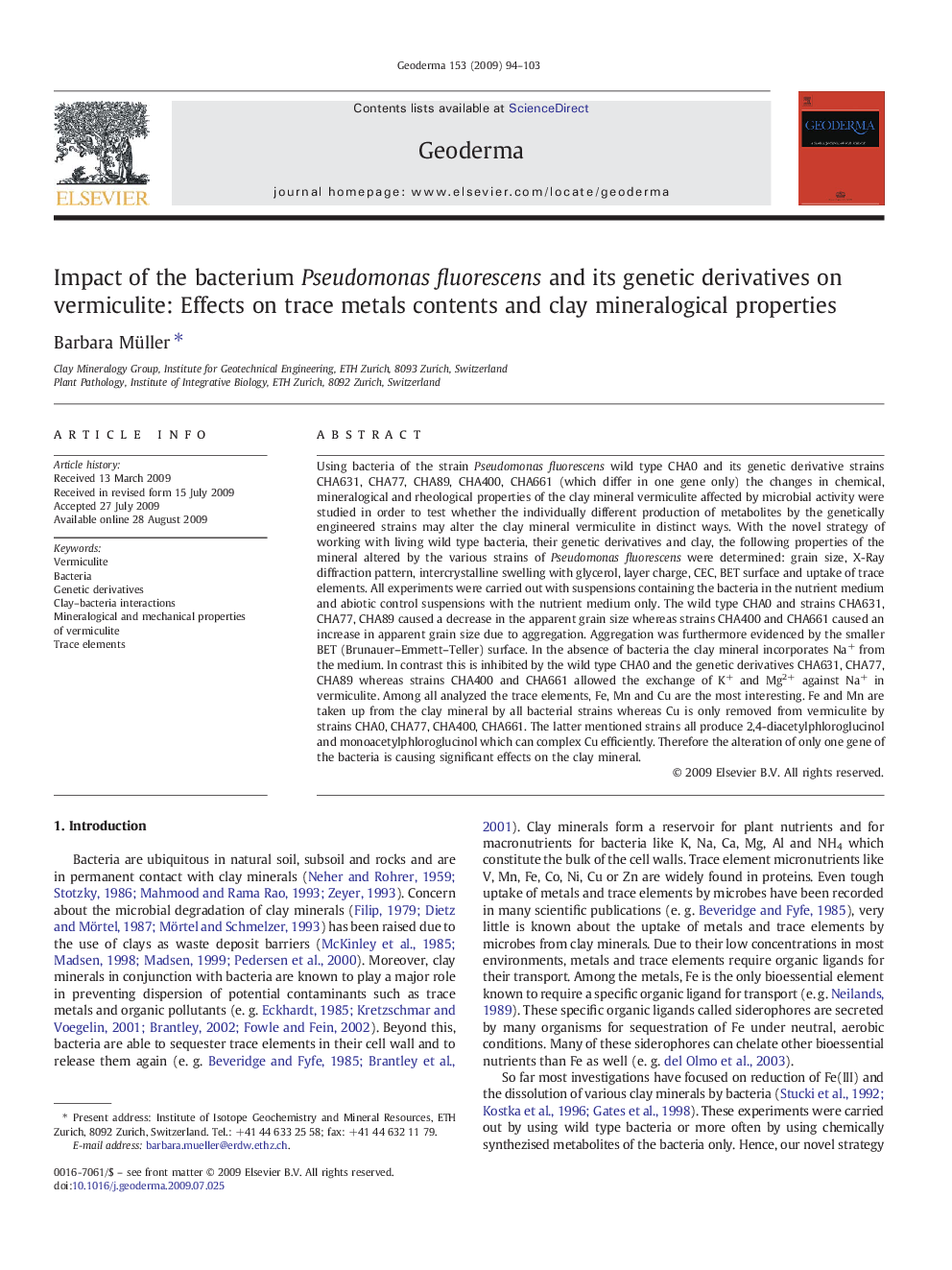| کد مقاله | کد نشریه | سال انتشار | مقاله انگلیسی | نسخه تمام متن |
|---|---|---|---|---|
| 4574294 | 1629528 | 2009 | 10 صفحه PDF | دانلود رایگان |

Using bacteria of the strain Pseudomonas fluorescens wild type CHA0 and its genetic derivative strains CHA631, CHA77, CHA89, CHA400, CHA661 (which differ in one gene only) the changes in chemical, mineralogical and rheological properties of the clay mineral vermiculite affected by microbial activity were studied in order to test whether the individually different production of metabolites by the genetically engineered strains may alter the clay mineral vermiculite in distinct ways. With the novel strategy of working with living wild type bacteria, their genetic derivatives and clay, the following properties of the mineral altered by the various strains of Pseudomonas fluorescens were determined: grain size, X-Ray diffraction pattern, intercrystalline swelling with glycerol, layer charge, CEC, BET surface and uptake of trace elements. All experiments were carried out with suspensions containing the bacteria in the nutrient medium and abiotic control suspensions with the nutrient medium only. The wild type CHA0 and strains CHA631, CHA77, CHA89 caused a decrease in the apparent grain size whereas strains CHA400 and CHA661 caused an increase in apparent grain size due to aggregation. Aggregation was furthermore evidenced by the smaller BET (Brunauer–Emmett–Teller) surface. In the absence of bacteria the clay mineral incorporates Na+ from the medium. In contrast this is inhibited by the wild type CHA0 and the genetic derivatives CHA631, CHA77, CHA89 whereas strains CHA400 and CHA661 allowed the exchange of K+ and Mg2+ against Na+ in vermiculite. Among all analyzed the trace elements, Fe, Mn and Cu are the most interesting. Fe and Mn are taken up from the clay mineral by all bacterial strains whereas Cu is only removed from vermiculite by strains CHA0, CHA77, CHA400, CHA661. The latter mentioned strains all produce 2,4-diacetylphloroglucinol and monoacetylphloroglucinol which can complex Cu efficiently. Therefore the alteration of only one gene of the bacteria is causing significant effects on the clay mineral.
Journal: Geoderma - Volume 153, Issues 1–2, 15 October 2009, Pages 94–103